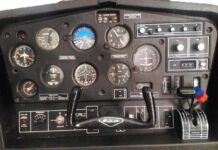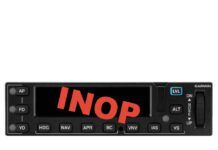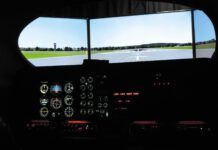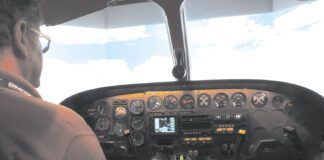Years ago I was briefly involved in motorcycle road racing. T-shirts with the slogan, “Crashing Sucks” and a suitable graphic were quite popular. Even then, I thought how appropriate that slogan also was for aviation.
Now we find ourselves with back-to-back airliner crashes while landing in visual conditions and I’m reminded of just how appropriate that slogan is to aviation. Crashing sucks for all the obvious reasons, but we must also remember that aviation is a small community and any calamity affects us all. If, as seems plausible, the official investigations reveal that the causes were that the pilots—for whatever reason—ultimately just allowed their aircraft to get too low, too soon, we all suffer the humiliation of failure to safely land visually, one of the most basic of maneuvers.
Regardless of the actual causes, these two accidents are sparking a lively debate about the proper use of automation, a topic that concerns me so much that we’ve recently run two articles that looked at various automation traps we can encounter. See “Automation Paradigm” in March, 2013 and “Automation Awry” in May, 2013.
Our aircraft get more technology each day. That should help keep us out of trouble, but sometimes the opposite is true. Perhaps we’ve forgotten that the human at the controls is the pilot in command and that automation can never be in command.
We continue to see over-reliance on auto-flight systems. It doesn’t matter what you’re flying, if the airplane isn’t doing what you—the pilot in command—want it to, and know to be safe, either push the right button or turn it all off and do it yourself. Whatever you do, don’t just wonder what it’s doing and why it’s not doing what you want.
The best autopilot is far dumber than the worst student. So, we should look on an autopilot as if it’s the student and we’re the instructor watching every single move, ready to step in at any time. In fact, just like a student, the autopilot will just let go and say, “Your airplane.” when it gets into something it can’t handle.
The trap of over-reliance on automation is deeper for professional pilots. They operate under standard operating procedures, seeming sometimes to be written as much by marketing departments as by flight operations. Few pilots can provide as good a ride for the folks in back as an autopilot can, and the skills necessary to operate an auto-flight system are easier to teach than the judgment frequently necessary to hand fly. So, the reasoning goes, mandate using the automation for a better outcome.
Perhaps, but only under normal circumstances. The programmers of those systems mainly concentrated on those normal circumstances and may not have considered the not so normal ones we can encounter any day. It takes a skilled and experienced pilot to see and sometimes predict the difference between normal and abnormal circumstances, but it shouldn’t take a skilled and experienced pilot to take over the controls from the auto-flight systems when something’s going horribly wrong. If we’re not prepared to do that, well, crashing sucks.— Frank Bowlin





